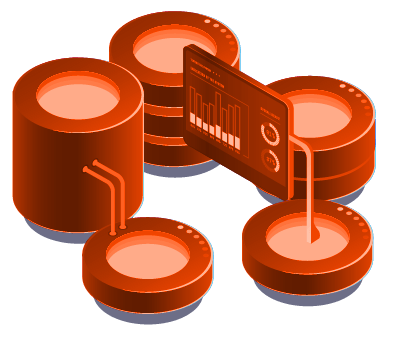Add On: Email Addresses
Email addresses
An email is a form of digital communication used to send and receive messages, usually consisting of text, images, links, and other attachments. It is sent via the Internet from one user to another using an email client (such as Outlook or Gmail). Emails can be used for both personal and professional purposes, thus providing an efficient way to keep in touch with friends, family members, colleagues, customers, and clients.
Having an email address, nowadays, is as common as having a phone number. People are required to own an email address for mainly the following reasons:
The different types of emails
User account emails :
Transactional emails such as user account emails tend to inform the user about the product or service. This does not involve promotional content. Some of the examples would be password change emails, payment status, user account information, privacy policy update, subscription renewal, and so on.
Billing-related emails :
These emails are sent to customers to inform them about their billing and payment-related information. Such emails are sent at the end of a billing cycle, update payment information, invoice details after purchase, and refunds processed.
Notification emails :
These are used to notify users just like how messages are used. Often emails are linked to social media accounts like LinkedIn and Facebook. Whenever there is a new comment, a new YouTube video of the user’s interest, or a job posting is posted, they will be notified to the user via email.
Emails on orders and purchases :
These emails are used to get confirmation while making a purchase or placing an order. Examples are delivery confirmation emails, order confirmation or cancellation emails, and emails requesting customer feedback.
Marketing emails :
Marketing emails are sent for promotional purposes. Common marketing emails are newsletters, announcement emails, emails about discounts and offers, and survey emails.
The types of email-related cybercrimes
With the proliferation of email usage, the challenges concerning cybersecurity have also increased. People own multiple email addresses from multiple service providers. Despite the benefits, there is also a lot of danger as emailing has become the easiest channel to commit crimes.
Often, email scams are used by fraudsters to hide their identity and infect computers with ransomware. They use such emails to attack not only individuals but also organizations. Through these scams, scammers gather data for their other criminal activities, hack systems, and receive money from individuals and businesses, leading to victims incurring financial and reputational damage.
The following are the most common types of email-related cybercrimes:
Email spoofing:
The sender’s address is not their original address and any reply to that mail may be bounced back or reverted to an unknown person who has faked his identity and can be a threat.
Phishing:
It is one of the most prevalent forms of cybercrime. It is used to target a wide range of audiences. In phishing, emails are sent as an attempt to trick individuals into giving out sensitive information such as login credentials. There are different types of phishing via email which include spear phishing, whaling and CEO fraud, and clone phishing.
Spams and Bogus offers:
involve receiving mail from a known seller or a famous brand, telling the victim about unbelievable offers at a very lower price in an attempt to get their credit card information.




